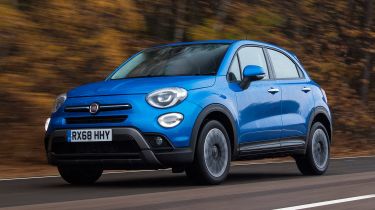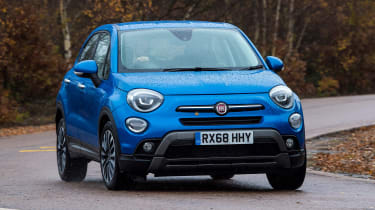Fiat 500X review - MPG, CO2 and running costs
All 500X versions offer a good balance of cost, performance and efficiency

The 2018 update saw prices rise for the 500X, and they jumped again the following year when Fiat dropped the basic 1.6-litre E-TorQ petrol engine. But, the pricier FireFly-powered versions may be more expensive, but they're vastly superior when it comes to on-road driving dynamics.
The range kicks off at around £19,000 for a 500X Urban with the 1.0-litre turbo petrol engine. Opting for the more rugged City Cross will cost roughly £1,200 more, while speccing the faster 1.3 auto is another £2,500-ish. There's also the Cross Plus, which adds more kit for around £1,800 extra.
With the removal of the diesels, the most efficient engine in the 500X is the 1.0 FireFly three-cylinder turbo petrol. It comes with a six-speed manual gearbox, and claimed economy of 43.5mpg. CO2 emissions start from 147g/km, but will increase depending on which trim level you opt for.
Go for the 1.3 FireFly with the standard DCT auto gearbox, and there's a claimed economy of 42.2mpg and emissions from 152g/km.
Range-topping Sport models offer a range of cosmetic tweaks and a few more substantial changes under the skin. Prices start from just over £23,000, but performance and economy isn't affected.
Insurance groups
Insurance groups range from group 10 for the entry-model Urban to group 16 for cars powered by the 1.3 petrol. Although performance from the Fiat isn’t electrifying, these are still competitive rates.
By way of comparison, the Nissan Juke starts at Group 11 and goes up to group 20, but there’s nothing in the 500X range to compare with the Juke 1.6 Tekna’s 134mph top speed and 0-62mph time of 7.8 seconds.
Depreciation
The Fiat 500 city car is a decent performer at resale time, but the 500X could do better. You're looking at average residuals of 36% after 3 years/36,000 miles, which isn't a brilliant return when you consider some small SUVs can achieve figures around 10% higher.








